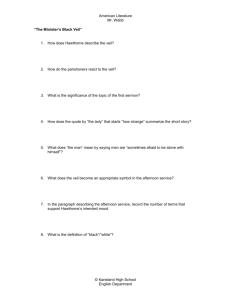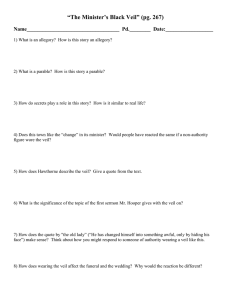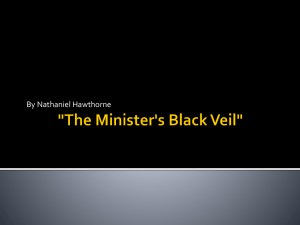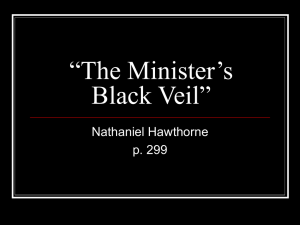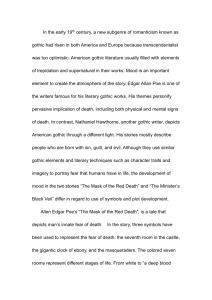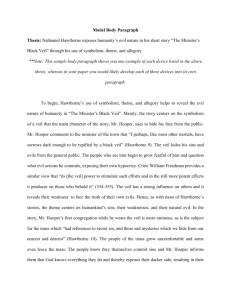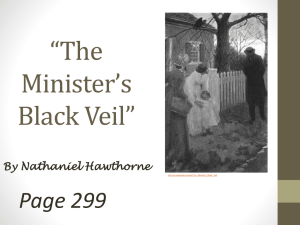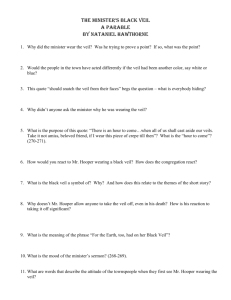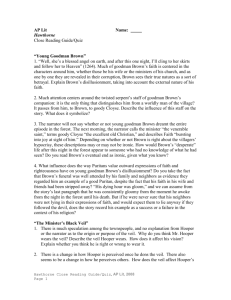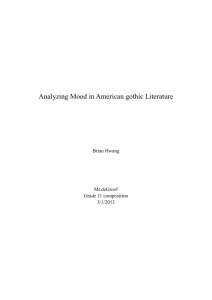The Minister`s Black Veil PPT2
advertisement
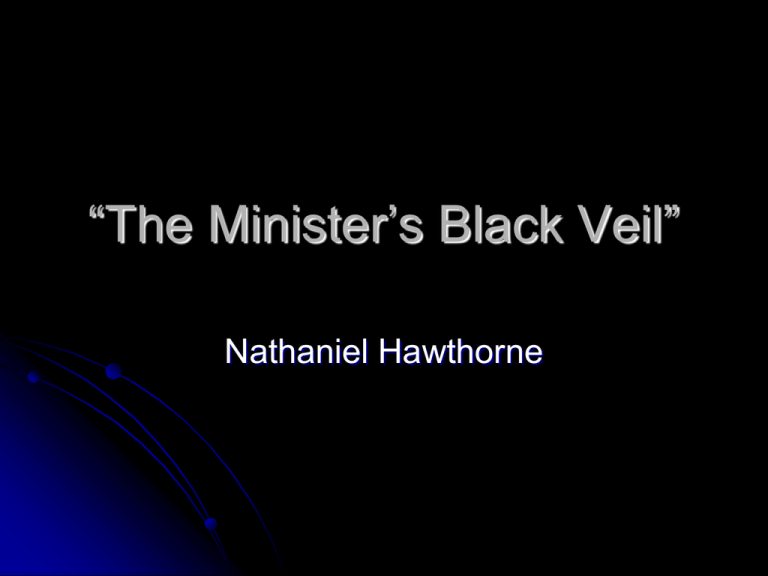
“The Minister’s Black Veil” Nathaniel Hawthorne Historical Notes Minister Hooper was modeled after a Mr. Joseph Moody from York, Maine. According to Hawthorne, Moody “made himself remarkable by the same eccentricity that is here related of the Reverend Mr. Hooper. In his youth, Moody had killed “a beloved friend; and from that day till the hour of his own death, hid his face from men.” Hawthorne understood well the “gloom and piety” of the early Puritans. One of his ancestors had persecuted Quakers. Another was one of the judges who condemned the Salem “witches.” (Judge Hathorne) Hawthorne subsequently added the “w” to his name. Effects of the Veil The congregation’s initial reactions to the veil are those of awe, dismay, fear, gloom, and curiosity. Elizabeth expresses a concern for the veil’s effect on Mr. Hooper’s reputation and breaks their engagement. Therefore, the veil generally results in Hooper being sad and lonely for the remainder of his life. The veil creates a feeling of horror in Hooper when he sees his reflection. What does the veil symbolize to Mr. Hooper? Secret Sin Preaches on this subject the first day he wears the veil Color black is sometimes associated with sin and evil Veils are used to hide things, so a veil is a good symbol for something hidden On death bed, refers to hiding sins from family, friends, lovers, and God. Isolation from Others Has the effect of isolating him Begs Elizabeth not to leave him in that isolation forever No one can penetrate it On death bed, refers to lack of closeness among even friends and lovers What does the veil symbolize to Mr. Hooper? (cont) Sinfulness (or evil) of any kind Color black is sometimes associated with sin and evil Sinfulness is inevitable Says he will wear veil forever; he, like all people, will never be without sin Mortality; Death Says a day will come when all will cast aside veils, referring to dying On death bed, refers to the veil that is lifted when one dies Veil remains on his body and decays with him

